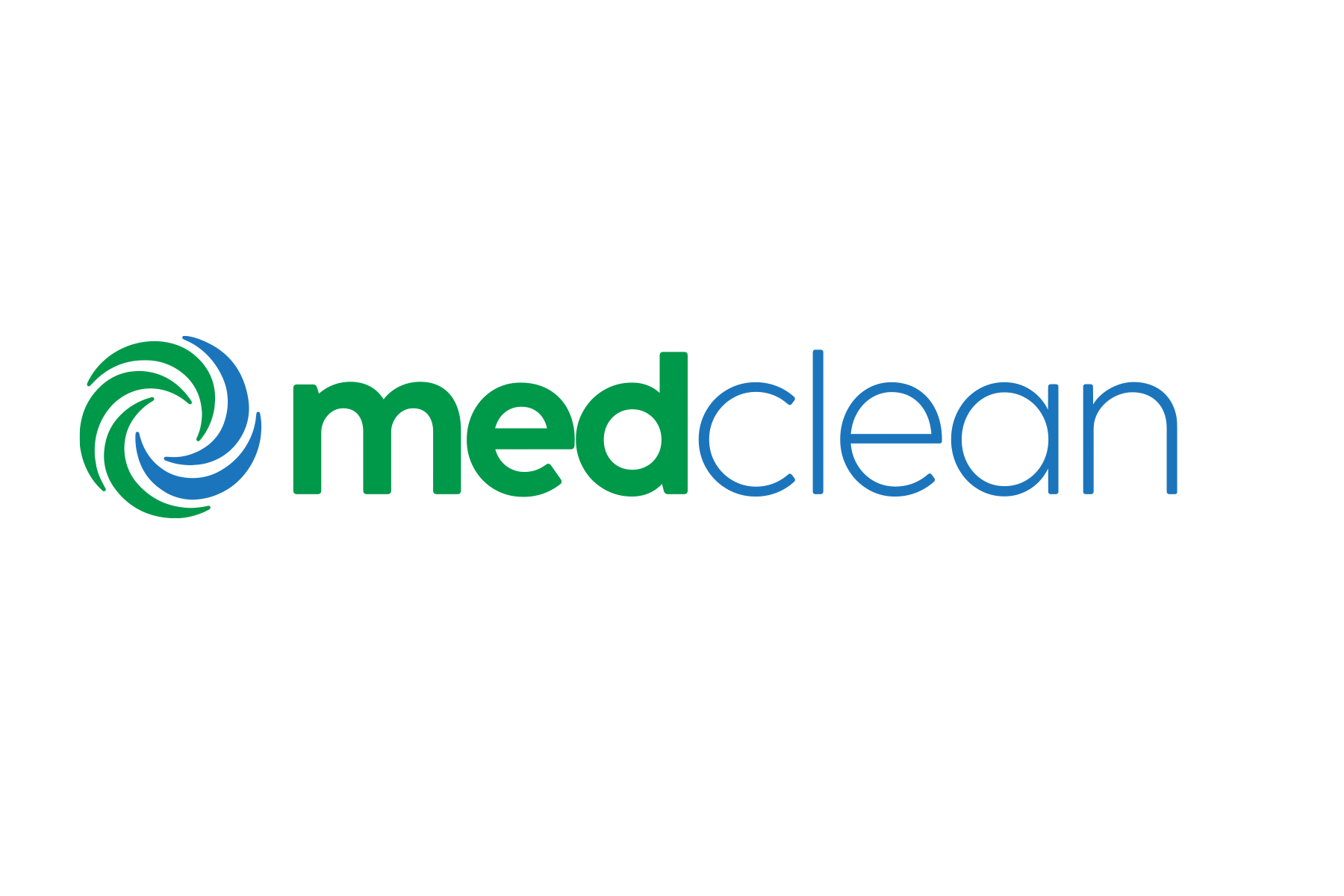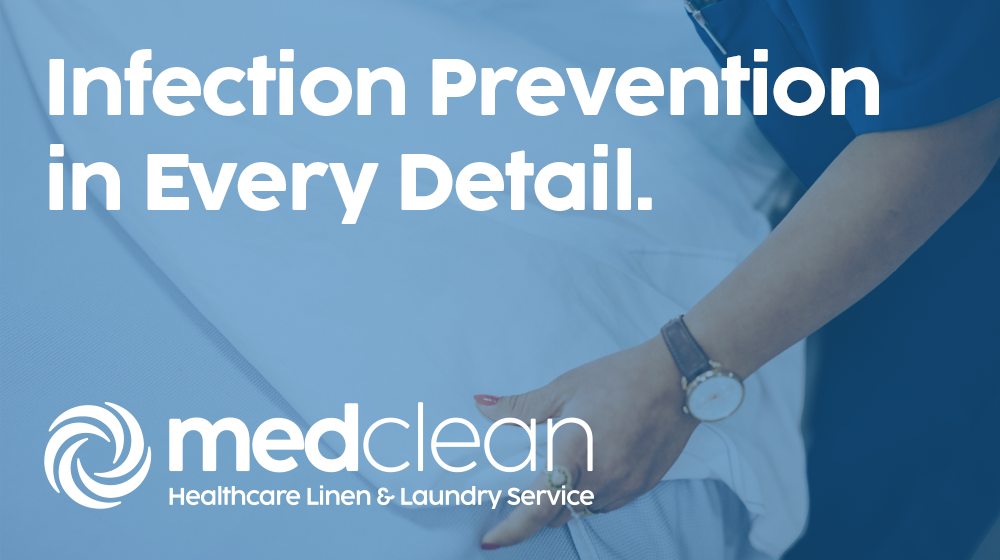When it comes to infection prevention, every detail matters, and that includes the linens. From bed sheets to patient gowns, the textiles used throughout a healthcare facility play an important role in protecting patients, staff, and visitors from potential infection risks.
While most people think of hand hygiene, surface disinfection, and PPE as primary safeguards, hygienically clean linens are another essential layer of defense. At MedClean, our certified processes and HLAC-accredited standards ensure that every linen and garment helps your facility maintain the highest level of safety and care.
Why Linens Matter in Infection Prevention
Healthcare textiles can serve as a reservoir for microorganisms if mishandled or improperly processed. According to the Centers for Disease Control and Prevention (CDC), the potential for contaminated linens to contribute to disease transmission is well-documented, particularly when soiled materials are agitated, improperly contained, or exposed to clean areas.
Although outbreaks linked directly to linens are rare, healthcare leaders know the risk can’t be ignored. The Association for Professionals in Infection Control and Epidemiology emphasizes that textiles should always be managed under strict protocols to prevent cross-contamination and environmental exposure.
From Collection to Storage: Cleanliness at Every Step
Maintaining hygienically clean linens isn’t just about the wash cycle. Every step, from collection to storage, impacts safety.
1. Collection and Handling of Soiled Linens
- Treat all used linens as potentially infectious.
- Bag them at the point of use in leak-resistant, color-coded bags.
- Avoid shaking or overfilling bags to reduce aerosolization.
- Ensure staff wear appropriate PPE during handling.
Following these simple precautions reduces the likelihood of exposure during the earliest stage of linen handling.
2. Transporting Linens Safely
Proper separation between clean and soiled textiles is critical. Closed or covered carts prevent spills and environmental contamination during transport within facilities and between laundry sites. At MedClean, we maintain strict separation between clean and soiled flows, virtually eliminating your facility’s risk of cross-contamination.
3. Laundering and Disinfection
During processing, linens undergo a carefully controlled sequence of thermal, mechanical, and chemical actions that remove and inactivate microorganisms. The CDC recommends a water temperature of at least 160°F (71°C) for 25 minutes or equivalent disinfection through low-temperature chemical processes.
MedClean’s HLAC-accredited process verifies that these critical control points, time, temperature, chemistry, and mechanical action, are continuously monitored. Our systems are designed to not only meet CDC guidelines but exceed them through validated hygienically clean results.
4. Packaging, Transport, and Delivery
Clean linens are protected immediately after processing using sealed packaging and covered carts. Transport vehicles are cleaned and inspected daily to prevent dust, moisture, or debris from compromising hygiene.
This attention to detail ensures linens arrive ready for patient use, not requiring additional handling or repackaging at your facility.
External Reference: CDC: Environmental Infection Control in Health-Care Facilities
5. Storage and Point-of-Use Handling
Even after delivery, cleanliness must be maintained. Linens should be stored in designated clean areas, away from dust, heat sources, or soiled materials. Shelving should be off the floor and routinely disinfected.
MedClean partners with healthcare facilities to ensure storage best practices are followed and that staff understand the importance of maintaining separation and proper airflow in storage areas.
External reference: Infection Control Today: The Role of Healthcare Laundry in Infection Prevention
Common Pitfalls to Avoid
Even with well-written policies, lapses in daily practice can undermine infection prevention. Common errors include the following:
- Overfilling or improperly sealing linen bags
- Allowing soiled and clean carts to cross paths
- Skipping equipment sanitation between loads
- Failing to monitor wash temperature and chemical levels
- Storing clean linen near janitorial supplies or HVAC vents
Every one of these mistakes increases the risk of cross-contamination, and all are preventable with proper oversight and vendor partnership.
The MedClean Difference: Certified Hygiene and Consistent Care
MedClean is proud to be HLAC-accredited, ensuring compliance with the most rigorous standards in healthcare laundry. From validated wash formulas to secure packaging and controlled storage, every part of our operation is designed to protect patients and staff.
Our certification confirms that our facilities are audited by independent inspectors, verifying that our systems consistently produce hygienically clean linens ready for patient care.
When you partner with MedClean, you gain more than a vendor, you gain a partner committed to your infection prevention goals.
Clean Linens. Safer Care. Proven Results.
Infection prevention doesn’t end at the wash line; it begins with every detail that follows. From how soiled textiles are collected to how fresh linens are delivered and stored, every step matters.
By choosing an HLAC-accredited partner like MedClean, you ensure your facility’s linens not only look clean but are scientifically verified to be hygienically clean, supporting safer outcomes across every department.
Ready to strengthen your infection prevention program?
👉 Contact MedClean today to learn how we can help your facility stay compliant, efficient, and safe.
FAQ: Infection Prevention and Hygienically Clean Linens
1. Why are clean linens important for infection prevention in healthcare facilities?
Clean linens are essential because they come into direct contact with patients and staff. If not properly handled or processed, textiles can harbor microorganisms that contribute to cross-contamination. Using hygienically clean linens helps minimize infection risk and supports a safer, healthier care environment.
➡️ Learn more from the CDC: Laundry and Bedding Guidelines
2. What does “hygienically clean” mean?
“Hygienically clean” refers to textiles that are verified, through testing and validated processes, to be free from harmful levels of bacteria, viruses, and other pathogens.
At MedClean, hygienic cleanliness isn’t assumed; it’s proven through routine microbial testing and continuous process monitoring as part of our HLAC-accredited system.
3. What is HLAC accreditation and why does it matter?
The Healthcare Laundry Accreditation Council (HLAC) sets rigorous standards for the processing of healthcare textiles. Accreditation verifies that a laundry facility meets or exceeds these standards through on-site inspections of equipment, workflow, hygiene controls, and documentation.
For healthcare facilities, partnering with an HLAC-accredited provider like MedClean ensures your textiles are processed according to the highest infection prevention standards.
4. What steps does MedClean take to prevent contamination during the laundry process?
MedClean follows a carefully controlled workflow to prevent recontamination:
- Separate physical areas for soiled and clean textiles
- Closed, labeled carts for transportation
- Verified wash temperatures and chemistry
- Routine audits and microbial testing
Each of these steps helps maintain linen integrity and infection control compliance.
5. What are common mistakes facilities make with linen handling?
Some of the most frequent issues include:
- Overfilling or improperly sealing soiled linen bags
- Mixing clean and soiled carts
- Skipping PPE during handling
- Storing clean linens near HVAC vents or janitorial supplies
- Allowing dust or moisture in clean storage areas
Small errors can undermine infection prevention efforts; that’s why training and clear workflow separation are essential.
6. How can a facility confirm that its laundry partner meets infection control standards?
Facilities should:
- Request proof of HLAC accreditation or equivalent certification
- Ask about microbial testing frequency and results
- Review written infection control policies
- Conduct periodic site visits or third-party audits
MedClean welcomes facility tours and compliance reviews. Transparency is central to our partnership approach.
7. Are reusable healthcare textiles safe compared to disposables?
Yes, when processed by an accredited provider, reusable textiles are just as safe (and sometimes safer) than disposables. They’re environmentally responsible, cost-effective, and subjected to stringent cleanliness validation.
Studies have shown that properly laundered reusable textiles meet or exceed infection control performance standards.
➡️ Source: TRSA Hygienically Clean Healthcare Standards

